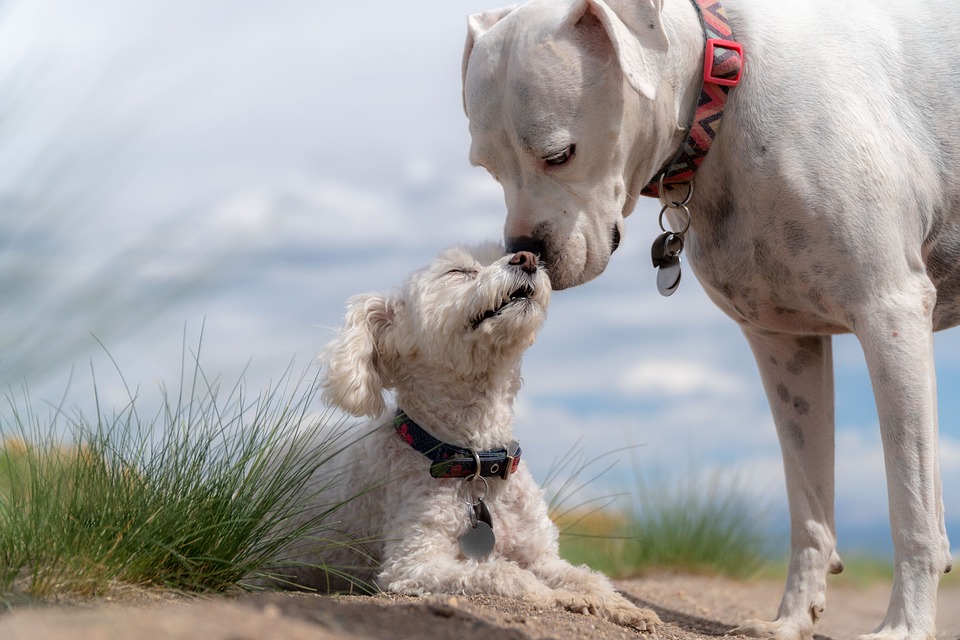Subtitle: Keeping Your Dog’s Nails Healthy and Happy
Introduction: Understanding the Importance of Nail Care for Dogs
Proper nail care is essential for the overall health and well-being of your furry friend. Neglecting your dog’s nails can lead to a variety of problems, including pain, infection, and difficulty walking. Regular nail trimming is a simple yet crucial part of your dog’s grooming routine that can help prevent these issues and keep your pet happy and comfortable.
Heading 1: Why Regular Nail Trimming is Essential for Your Dog’s Health
Subheading 1: The Consequences of Neglecting Your Dog’s Nails
When a dog’s nails become too long, they can cause discomfort and pain. Overgrown nails can easily get caught on surfaces, leading to broken or torn nails, which can be extremely painful for your pet. Additionally, long nails can alter your dog’s gait, putting unnecessary strain on their joints and potentially leading to long-term mobility issues.
Subheading 2: The Benefits of Regular Nail Trimming
Trimming your dog’s nails on a regular basis offers numerous benefits. Firstly, it helps maintain proper foot posture and encourages a healthy gait. Shorter nails also reduce the risk of injury and discomfort, as they are less likely to snag or break. Moreover, regularly trimming your dog’s nails allows you to inspect their paws for any signs of infection or injury, ensuring early detection and prompt treatment.
Heading 2: Preparing for a Successful Nail Trimming Session
Subheading 1: Gathering the Right Tools
Before you begin trimming your dog’s nails, make sure you have the necessary tools. Invest in high-quality dog nail clippers or a grinder specifically designed for dogs. Human nail clippers or scissors are not recommended, as they can easily cause injury or discomfort. Additionally, keep styptic powder or cornstarch nearby in case you accidentally cut the quick and need to stop bleeding.
Subheading 2: Creating a Calm and Comfortable Atmosphere
Dogs can be sensitive to nail trimming, so it’s important to create a calm and comfortable environment. Find a quiet area where you and your dog can relax without distractions. Make sure your dog is calm and in a relaxed state before starting the trimming process. Reward your dog with treats and praise throughout the process to associate nail trimming with positive experiences.
Heading 3: Step-by-Step Guide to Safely Trim Your Dog’s Nails
Subheading 1: Familiarizing Your Dog with Nail Trimming
Introduce your dog to the concept of nail trimming gradually. Start by touching their paws and nails gently, rewarding them with treats and praise. This helps your dog become comfortable with the sensation and reduces anxiety.
Subheading 2: Identifying the Different Parts of the Nail
Before trimming, it’s important to understand the different parts of your dog’s nail. The hard outer shell is called the nail itself, while the softer, sensitive tissue inside is known as the quick. It’s crucial to avoid cutting into the quick, as it can cause pain and bleeding.
Subheading 3: Choosing the Right Trimming Technique
When trimming your dog’s nails, it’s best to make small, gradual cuts rather than attempting to cut off a large portion at once. Trim just the tip of the nail, avoiding the quick. If you’re unsure where the quick is, err on the side of caution and trim less. Remember to use a steady hand and take breaks if needed.
Subheading 4: Proper Nail Length and Frequency of Trimming
The ideal nail length varies depending on your dog’s breed and lifestyle. As a general rule, the nails should not touch the ground when your dog is standing. Regularly check your dog’s nails and trim them every 2-4 weeks to maintain an appropriate length.
Heading 4: Frequently Asked Questions (FAQs) about Dog Nail Trimming
Subheading 1: How do I know if my dog’s nails are too long?
If you can hear your dog’s nails clicking on the floor or if they appear excessively long and curling, it’s a sign that they need to be trimmed.
Subheading 2: Can I use human nail clippers or scissors to trim my dog’s nails?
No, it is not recommended to use human nail clippers or scissors, as they can crush or splinter the dog’s nails. Invest in proper dog nail clippers or a grinder for a safer and more effective trimming experience.
Subheading 3: What if my dog’s nails start bleeding during the trimming process?
Accidentally cutting the quick can cause bleeding. If this happens, remain calm and apply styptic powder or cornstarch to the affected area. Apply gentle pressure until the bleeding stops.
Subheading 4: My dog is afraid of nail trimming. What can I do to help?
If your dog is anxious or fearful of nail trimming, start by desensitizing them to the process. Gradually introduce them to the tools and sensations associated with nail trimming, rewarding them with treats and praise. If necessary, seek the assistance of a professional dog groomer or veterinarian.
Subheading 5: Can I use a nail grinder instead of clippers?
Yes, a nail grinder can be used as an alternative to clippers. It slowly grinds down the nail, allowing for more control and reducing the risk of cutting the quick. However, it’s important to accustom your dog to the sound and sensation of the grinder before using it.
Conclusion: Maintaining Your Dog’s Nail Health for a Happier, Healthier Life.
Regular nail trimming is an essential aspect of your dog’s grooming routine. By understanding the importance of proper nail care and following a step-by-step guide, you can ensure your dog’s nails stay healthy, comfortable, and pain-free. Remember to remain patient, calm, and reward your dog throughout the process. By investing time and effort into your dog’s nail health, you contribute to their overall happiness and well-being.









